James Mott provides a quick reference guide to the rutting behaviour and dates for the UK’s six species of deer.
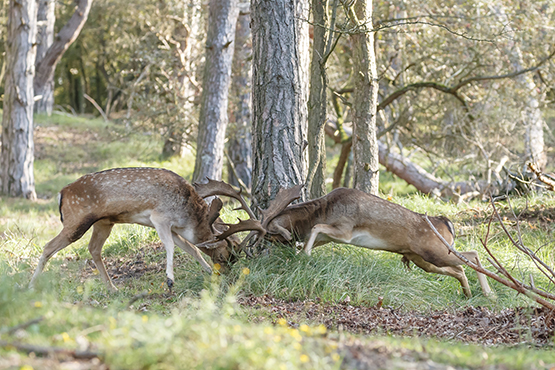
It is truly one of the most exciting spectacles to take place in the British countryside. For centuries past, right up to the present day, the different UK deer species found in our forests and ancient woodlands gear up to mate during a spell binding period of sexual activity referred to as the ‘rut’.
Definition of ‘Rut’ (from middle English rutte and from Latin rugire to roar). First Known Use: 15th century:
“an annually recurrent state of sexual excitement in the male deer; broadly : sexual excitement in a mammal especially when periodic”
With testosterone coursing through every vein, the male deer of the species jostle for position and display their virility to potential mates in a variety of different ways including, marking territories, calling, creating rutting stands and sparring. Rutting activity is often most intense soon after dawn, however some activity occurs throughout the day particularly in the early evening.
Each species goes about attracting females and mating in a slightly different way. The following is a summary of the six species of wild deer found in the UK and how each one goes about the task of reproducing.
Roe Deer Rut – Mid July to mid August brought on by hot, muggy weather.
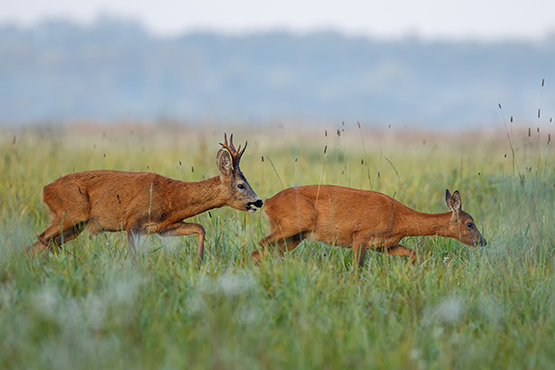
Bucks aggressively defend a territory from the start of spring in February/March until the end of August. During this time bucks will pursue does and compete with neighbouring bucks to take over their territories and the does visiting that area. Fights between males can get serious and sometimes lead to fatalities.
Doe’s in oestrous will call and draw in the buck to her territory. A long chase ensues, usually around an object such as a tree(s) and creates a rutting ring or figure of eight which can be seen on the ground. Eventually the pace slows and the buck mounts the doe.
Different from other deer, implantation of the fertilised egg in the Roe does uterus is delayed for 5 months. In reasonable conditions adult does will produce twins, sometimes triplets.
May be a “false rut” seen in October, possibly due to doe kids reaching sexual maturity later than the main rut.
For more information about stalking Roe Deer follow this link: roe-buck-stalking
Fallow Deer Rut – late September to early November

The mating strategy of fallow deer is variable, depending on habitat and population density.
Bucks often create rutting stands in traditional areas to which the does are attracted.
Where bucks congregate to rut this is known as a “lek”. The stand or “lek” are areas where small territories are defended together with those of competitors. Does then choose a mate based on his ability to defend the site from other rival bucks.
Alternatively bucks may search out doe groups and mate opportunistically
Bucks perform ritualized displays as a form of competing with others, which sometimes can lead to fights if evenly matched.
Embryo development begins immediately. Does produce a single fawn every year over a breeding life of 10 years or more.
For more information about Stalking Fallow Deer follow this link: fallow-deer-stalking
Red Deer Rut – late September to November
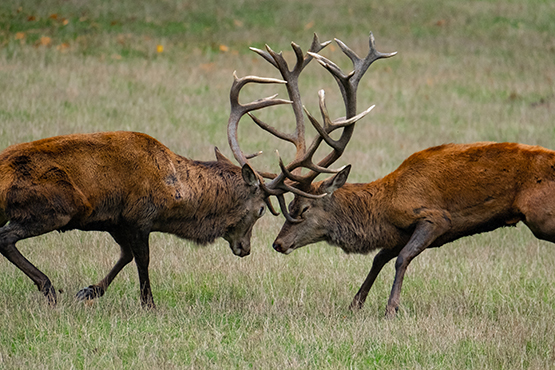
Stags take two years to be sexually mature but are unlikely to be successful at mating until they are at least five years old.
Stags leave their summer quarters and return to the hind's home range and compete for access to hinds by engaging in elaborate displays of dominance including roaring, parallel walking, posturing and fighting.
Serious injury and death can result but fighting only occurs between stags of similar size that cannot assess dominance by any of the other means.
The dominant stag then ensures exclusive mating with all the hinds in his harem.
In woodland populations hinds over a year old give birth to a single calf after an 8 month gestation each year. Puberty may be delayed until 3 years old in hill hinds, which may only give birth once every 2 or 3 years.
For more information about Stalking Red Deer follow this link: red-deer-stalking
Sika Deer Rut – late September to November
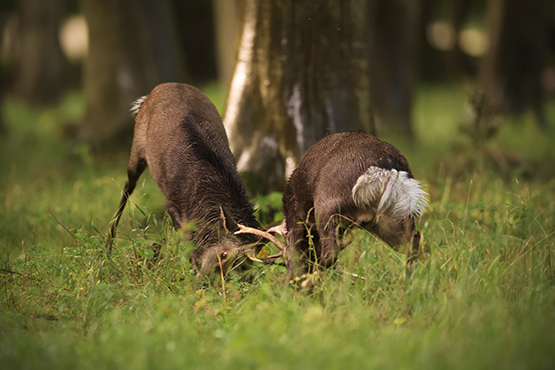
The environment has a strong influence on mating strategy. The courting and mating of the Sika stag is dependent on the terrain and habitat of the individuals.
Like Fallow deer, Sika stags defend a small rutting territory from competitors but may also defend a harem of hinds if gathered together, like the Red deer
Less typically, males may congregate to form a “lek” or may simply wander throughout the hinds' range in search of receptive hinds.
A single calf (rarely twins) is born during early May to late June after a gestation period of 7 ½ months.
For more information about stalking Sika Deer follow this link: sika-deer-stalking
Chinese Water Deer Rut - November to December
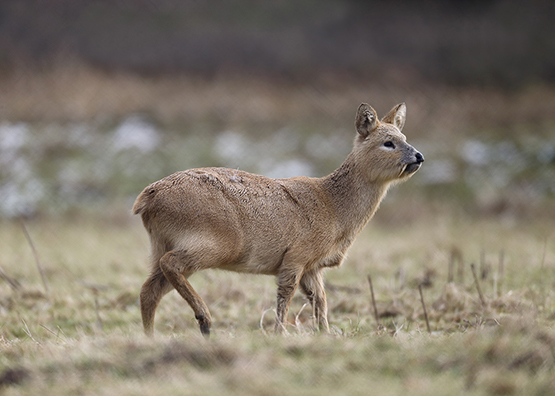
Bucks and does form pairs and defend territories during November and December and remain together until April.
Bucks perform parallel walks with invading rivals, as do other deer species, and only fight if their dominance order is not identified using this method.
Unlike antlered species, fighting in Chinese water deer (who use their long canine tusks to great effect) rarely results in fatality but injuries are common.
In reasonable conditions adult does will produce twins although pregnancies with 4-5 foetuses are not uncommon.
For more information about stalking Chinese Water Deer follow this link: chinese-water-deer-stalking
Muntjac Deer Rut
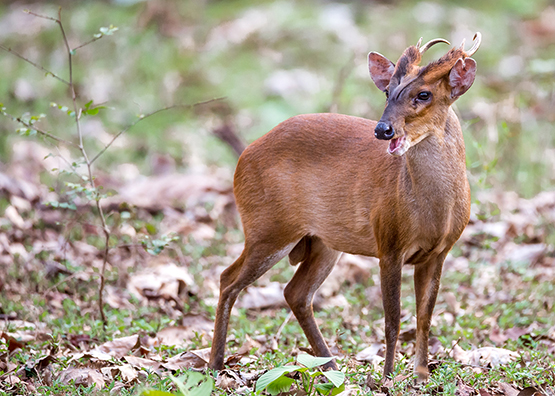
In contrast to all other species of deer in the UK, muntjac do not have a defined breeding season (rut). Instead, they breed all year round and muntjac does can conceive again within days of giving birth.
Bucks may fight for access to does but remain unusually tolerant of subordinate males within their vicinity.
Adult bucks pursue oestrous does. They are often seen with their noses down, following a doe’s scent trail.
Muntjac are capable of breeding at 8 months old and breed all year round. After a gestation period of 7 months the doe gives birth to a single kid and is ready to mate again within a few days.
For more information about Stalking Muntjac follow this link: muntjac-deer-stalking
During the rut deer loose inhibition and as a result they become much more visible. This presents the unique opportunity to view one of the greatest and inspiring spectacles in nature up close.
Deer stalking during the rut is very popular, so at County Deer Stalking we schedule extra dates during the rut to accommodate as many outings deer stalking as possible. With the Red, Fallow and Sika deer rut fast approaching in Autumn, why not give us a call and we’ll send you a list of available dates: contact-us



















